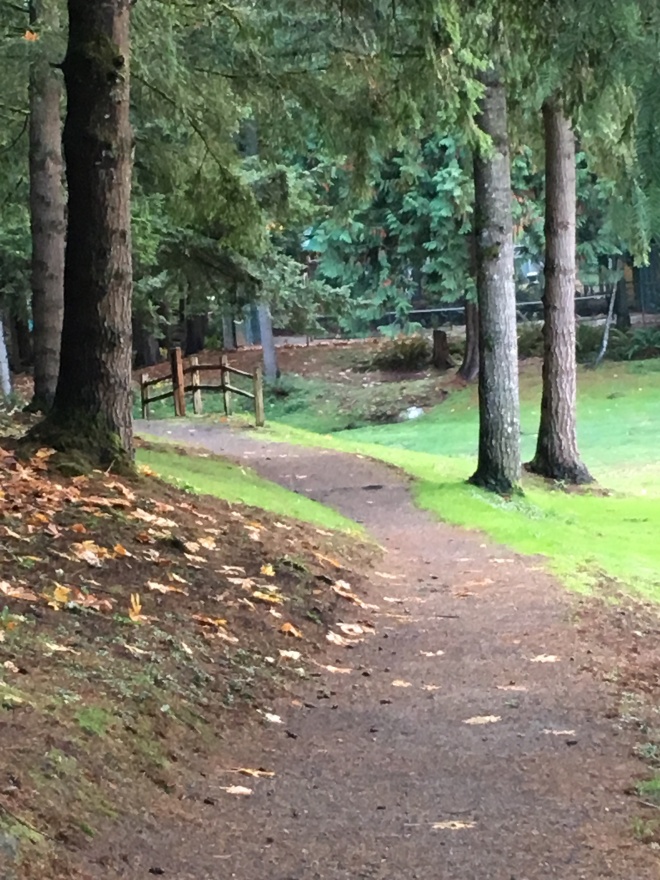
Familiar Ways
I choose to walk the old familiar ways,
To wend ways where I’ve put my foot before,
To gaze anew on views seen other days,
Which, though familiar, never seem to bore.
The changing light and seasons have their ways
Of making old things new: The light-laced hoar,
The first-flush, green-glow, bursting-forth spring days,
The growing tinge of gold we can’t ignore.
Each day, my dear, I choose afresh our trail,
The one we blazed so many years ago,
Eschewing other routes that might avail,
And hewing to the well-worn way we know.
Forsaking novelty need be no jail
With your face bathed in sunset’s golden glow.
(2016)
Notes: June is a big month for weddings. I know I’ve got an anniversary coming up soon. When people ask me how long I’ve been married, I have to stop and do the math. In the early years it was easy. We took in a young cat a month after our wedding, and so for 20 years I knew we were as married as the cat was old.
But when the cat died I was forced to use other memory tools.
As I was working on this sonnet a couple of years ago, I was reminded of a story poet John Ciardi related about Robert Frost, who at a lecture was asked by a woman in the audience: “Mr. Frost, surely when you write one of your beautiful poems, you are not thinking of technical tricks!”
Frost looked at the woman a while and replied, “I revel in them!”
Ciardi says Frost was like a horse trader who “would pick up an idea and whittle at it until he either wound up with a little whittled shape or a pile of shavings on the floor.”
I felt a little like a horse trader as I was writing this poem. It started with a simple, little idea. I can’t remember ever “whittling” more on a poem before. At first, this one seemed like it just never wanted to happen. I just kept whittling and whittling until something very different began to emerge from where I started.
After what seemed like an eternity, I began to see the tricks of the trade — namely rhythm, diction, image and form — coming together to embody the simple little idea.
This one did not plop, fully formed, into my lap. It was written, re-written, and re-written again. I wrote in on my phone. I copied it out by hand in a notebook. I typed it in Microsoft Word on my laptop. I read it aloud and even recorded a reading of it to hear how it sounded.
I found myself being keenly aware of assonance, alliteration and internal rhyme like never before.
I found myself unconsciously using the same sounds and rhymes over and over again as if I was consciously reinforcing the central idea. Then, I found myself breaking the pattern with lavish, flamboyant word choices in the middle of the poem to demonstrate the message.
I found myself coming around to embracing a metaphor in the final part of the poem. It was an idea that emerged only after the first part of the poem was written.
It may be a pile of shavings. Or it might be a little whittled shape.
You can be the judge.
Beautiful poetry Bob! Weirdly, wordpress wouldn’t let me ‘like’ it, claiming i’m not a member.
LikeLike
Thanks, David! Funny that WordPress would send your message but not allow a “like.”
LikeLike